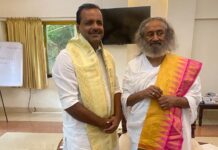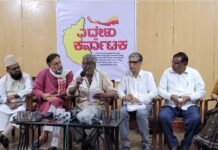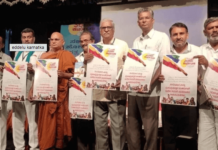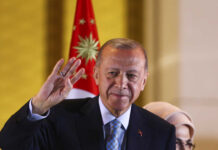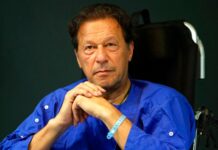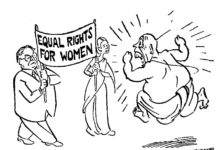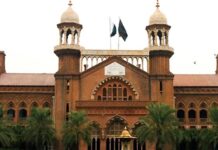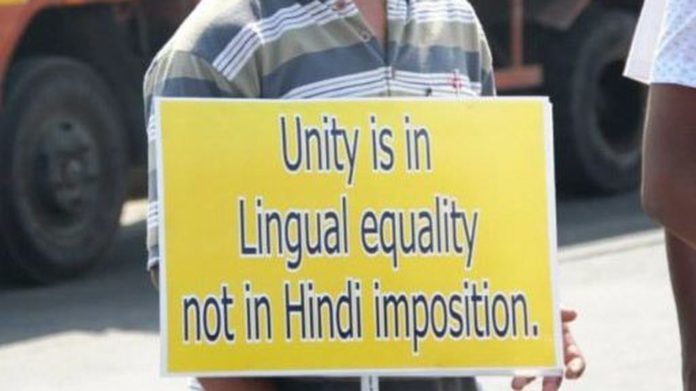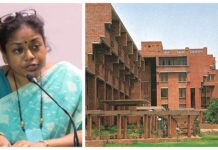Is there anything surprising about the draft New Educational Policy, especially it’s view on language education? Anyone who had gone through the BJP’s language education policies over the years would respond with an emphatic, No. Undoubtedly, under the pressure from South Indian states, especially from Tamil Nadu the center has budged a little. The modified draft under the heading ‘Flexibility in the choice of languages’, has omitted references to the language that students may choose. Recommendation regarding the implementation of a three-language formula remains intact. Three language formula inherently is a root to allow for Hindi imposition, one could find no other reason than this for the emphasis on the number, three.
The aim of Hindi imposition upon the states which does not have Hindi as a regional language is plain and clear. It comes from a peculiar understanding of nationalism. Hindutva, the ideology of the ruling party in India, has always been immersed in its view of India as dominated by these elements, the Hindu and Hindi which in their perspective is the culture and language respectively of the true Indian. For the Hindu nationalist, these elements are the building blocks of the nation as they conceive it. Irrespective of the regional variation, which may be allowed, the national body ought to be, in this perspective, dominated by these elements. So all citizens within the nation, for them, must communicate to the Indian state through Hindi. Not just the any Hindi, but the Hindi which has been thoroughly Sanskritized.

BJP’s obsession with the Hindi imposition precedes even the organization itself. The predecessor of the BJP, the Jan Sangh in its resolution on 10th July 1965 accused Indian National Congress of going back on Hindi imposition. To quote, it states:
“To say that English should continue at the Centre so long as even a single non-Hindi state desires, is an index that the Congress Working Committee does not honestly desire the replacement of English by Hindi as the Centre’s Official language.”
It was the strong opposition to Hindi imposition from the states like Tamil Nadu which actually stopped the forward march of the north Indian language.
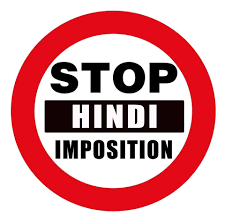 Obviously, BJP is not the only entity which tried to impose Hindi on the Indian population, Congress had played its own role. People like Purushottam Das Tandon, who was also the national president of Indian National Congress, were at the forefront of Hindi imposition. C. Rajagopalachari also played a role as the person who attempted to impose Hindi upon the Tamil population. In 1937, 1946, 1963, 1965, 1967, 1986 and 2014 the attempts were made to smuggle Hindi into the syllabuses and were withdrawn due to the protest.
Obviously, BJP is not the only entity which tried to impose Hindi on the Indian population, Congress had played its own role. People like Purushottam Das Tandon, who was also the national president of Indian National Congress, were at the forefront of Hindi imposition. C. Rajagopalachari also played a role as the person who attempted to impose Hindi upon the Tamil population. In 1937, 1946, 1963, 1965, 1967, 1986 and 2014 the attempts were made to smuggle Hindi into the syllabuses and were withdrawn due to the protest.
A draft policy, like the one which has become controversial now. is meant to test the waters, to find the strength of the opposition to this move. Temporary withdrawal must not be seen as the final victory over these elements. BJP is clear that it needs to teach each and every child of this country Hindi. In the process of creating a single language, the Hindi has already intruded into the space of other languages in north India like the mythili, Bhojpuri, Marwari, etc. For most of these languages marginalization near completion. Marathi, even with the presence of a strong cultural and literary tradition, is facing severe threat from Hindi. South India has successfully resisted such imposition attempt till now.
Those trying to impose Hindi upon other languages must look into the experience around the globe to see the failures of the projects which sought to impose an alien language on a population. As inhabitants of the subcontinent, we need not even go on a world tour to identify the repercussions of such acts.
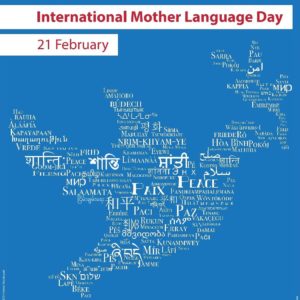 The idea of International Mother Language Day has origins in the brutal history of the subcontinent. The over-enthusiasm of the Pakistani ruling elites, to create a unifying element in their diverse country ended up in the language movement in East Pakistan. Later this very same movement forced to deal with an uncompromising and brutal regime turned into a secessionist movement, leading to the creation of Bangladesh in 1971. International Mother Language Day, declared so by UNESCO in 1999 is not just a call to protect mother tongue but it reminds us of the need for a democratic understanding to ensure harmony and integrity of a nation.
The idea of International Mother Language Day has origins in the brutal history of the subcontinent. The over-enthusiasm of the Pakistani ruling elites, to create a unifying element in their diverse country ended up in the language movement in East Pakistan. Later this very same movement forced to deal with an uncompromising and brutal regime turned into a secessionist movement, leading to the creation of Bangladesh in 1971. International Mother Language Day, declared so by UNESCO in 1999 is not just a call to protect mother tongue but it reminds us of the need for a democratic understanding to ensure harmony and integrity of a nation.
It must be recalled that Pakistan in an attempt to create a unified nation-state declared Urdu to be its national language. People of East Pakistan demanded that Bangla be made at least one of the national languages, in addition to Urdu. A mass protest ensued, taking different forms. On 21 February 1952, police opened fire on rallies. In the police, firing led to the death of 5, with hundreds of others injured. It is this day which is being observed throughout the world since 21 February 2000.
Another such event in the subcontinent is the brutal history of Sri Lanka. The prolonged civil war which saw the divided nation engaging most brutal acts of violence. The Official Language Act No. 33 of 1956, was an act passed in the Parliament of Ceylon in 1956. The act made Sinhala as the official language, while it failed to give Tamil due importance.
In India, due to the brutal majority of the so called Hindi heartland, the official language part of the Indian constitution and other laws already are in favour of the Hindi. Equipped by these mechanisms central governments in India have persisted on their attempts to implement Hindi in syllabuses across the country. Heavily funded projects such as Hindi prachar sabhas etc are also another manner in which the Indian state has sought to impose Hindi upon the non-speakers. As the government led by the Narendra Modi is entering its second term we find another attempt to impose Hindi. This time the opposition came from not just from Tamil Nadu, but also from Karnataka, Bengal, and Maharastra. Those at the center must realize and comprehend India as a multi-linguistic and plurinational state. This understanding must be embedded into the constitution and legal system of this country. The problem of persistence of the linguistic hegemony of Hindi needs to be put to rest finally.
We still have to grow as a society to accept the multilingual states as such. The idea of a nation-state as one which must have a single common language must change. It is not enough to verbally state it, but it must be enacted into the constitutional and legal system of this country.


